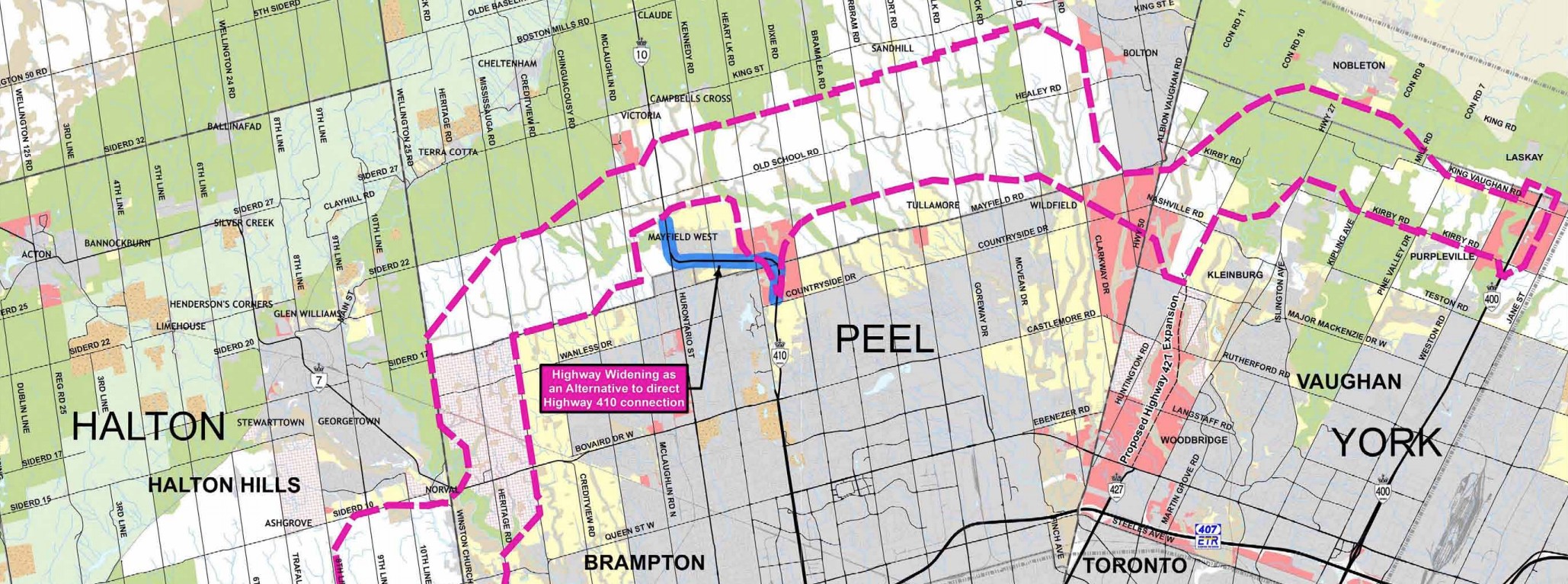
Opposition gearing up for round two in fight against GTA West Highway
Caledon resident Debbe Crandall knows very well that in the past, highways have brought prosperity.
Strips of pavement are laid and developers swarm to get as close as they can, developing coveted pieces of real estate so close to a major transit artery.
So she understands why the provincial government under the PCs and Premier Doug Ford wish to move ahead with the environmental assessment for the GTA West Highway — highways have been good for business. “It has resulted in prosperity,” she says.
The GTA West Corridor would probably create the same result, at least for developers, opening up large tracts of farmland for sprawling subdivisions. The industry is already drooling at the prospect of large swaths of land being unlocked inside the corridor, which would run west from Vaughan through Caledon, then arc southwest, skirting the edge of Brampton on its way toward the 401/407 between Mississauga and Milton. It would pass on or near the edge of protected areas such as the provincial Greenbelt and the Oak Ridges Moraine. And Ford has previously shown a desire to keep the development industry happy.
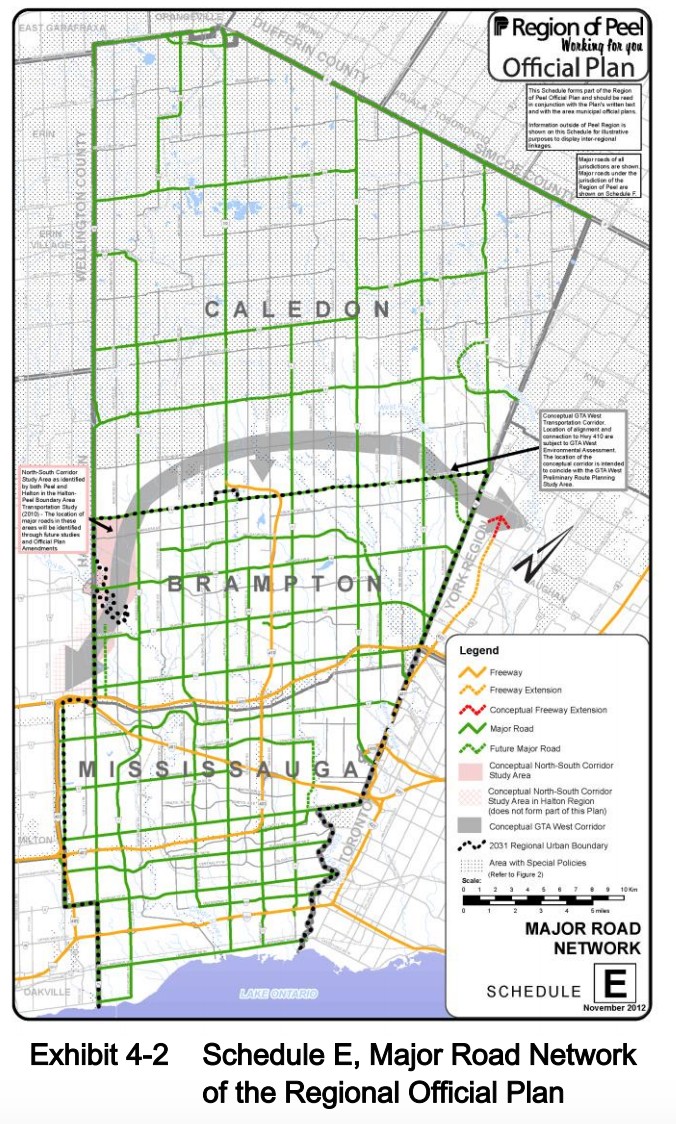
The previously proposed corridor for the GTA West Highway.
But for Crandall, a member of the STORM (Save the Oak Ridges Moraine) advocacy group, the highway would also be a step backward for transportation planning, the environment, and Ontario’s battle to mitigate the looming impacts of a changing climate.
“The whole thing is scary,” she says. “We continue to advocate that a [new] 400-series highway is regressive.”
Or, as Tim Gray, executive director of Environmental Defence, puts it, “It’s a 1950s solution to a 2020 problem.”
Brampton West PC MPP Amarjot Sandhu, along with former minister of transportation (now Environment Minister) Jeff Yurek, confirmed last week that the government would immediately restart the environmental assessment for the highway. The EA had been cancelled under the previous Liberal government after an expert panel’s report found the highway would not accomplish the goal of reducing gridlock in the GTA.
"As our region continues to grow, this study will ensure our highways are working for businesses, commuters and families across the Greater Golden Horseshoe,” Sandhu said in a press release. “While being in touch with commuters and people in the trucking industry in Brampton West, I shared their concerns with Minister Jeff Yurek, who was very kind and assured the ministry would help as much as it can to resolve the issue, which was long overdue to improve the region's transportation network, reduce travel times and help alleviate traffic congestion in Brampton and across the GTA."
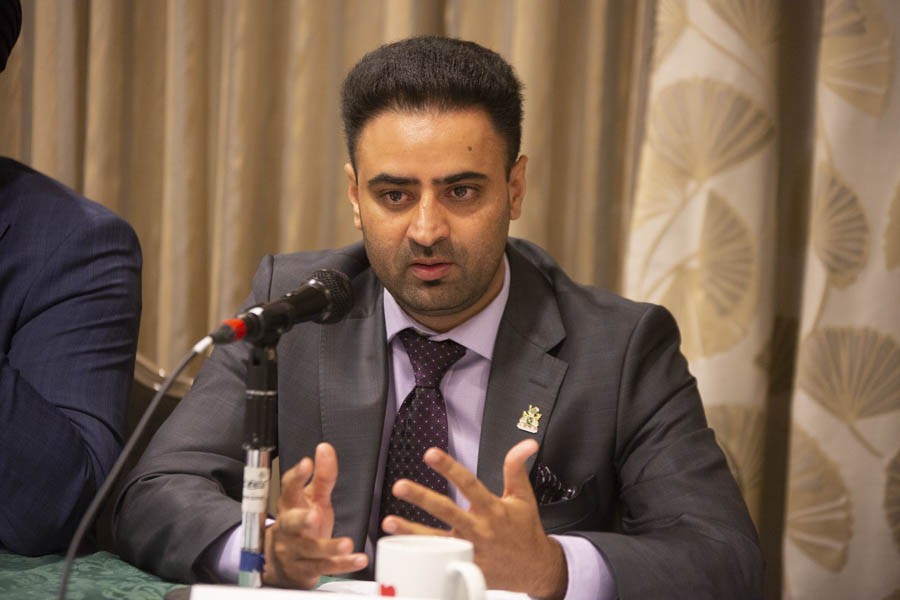
Brampton West PC MPP Amarjot Sandhu
The EA process will pick up where it stopped in 2015. A public information centre is planned for the fall, where residents will be able to see and comment on the preferred route for the highway. The government anticipates the EA to be completed by the end of 2022.
“Our government will continue to invest and build new, efficient infrastructure to move people and goods faster," Yurek said in a press release. "Resuming the EA for the GTA West Corridor will ensure we can build more transportation infrastructure in the future that meets the needs of the people as our economy grows."
The panel that reviewed the work of the previous EA came to a different conclusion, finding that the potential benefits of a highway in the area had been overstated and “based on unsupported assumptions.” It said the process hadn’t adequately addressed potential alternatives.
“The panel is thus not recommending that there be continued protection of the corridor identified as preferred in the GTAW EA,” the final report said. “The province’s new and evolving policy landscape and societal context herald a very different future than the one that was imagined 10 years ago at the outset of the GTAW EA. These changes have far-reaching implications for travel and for transportation planning.”
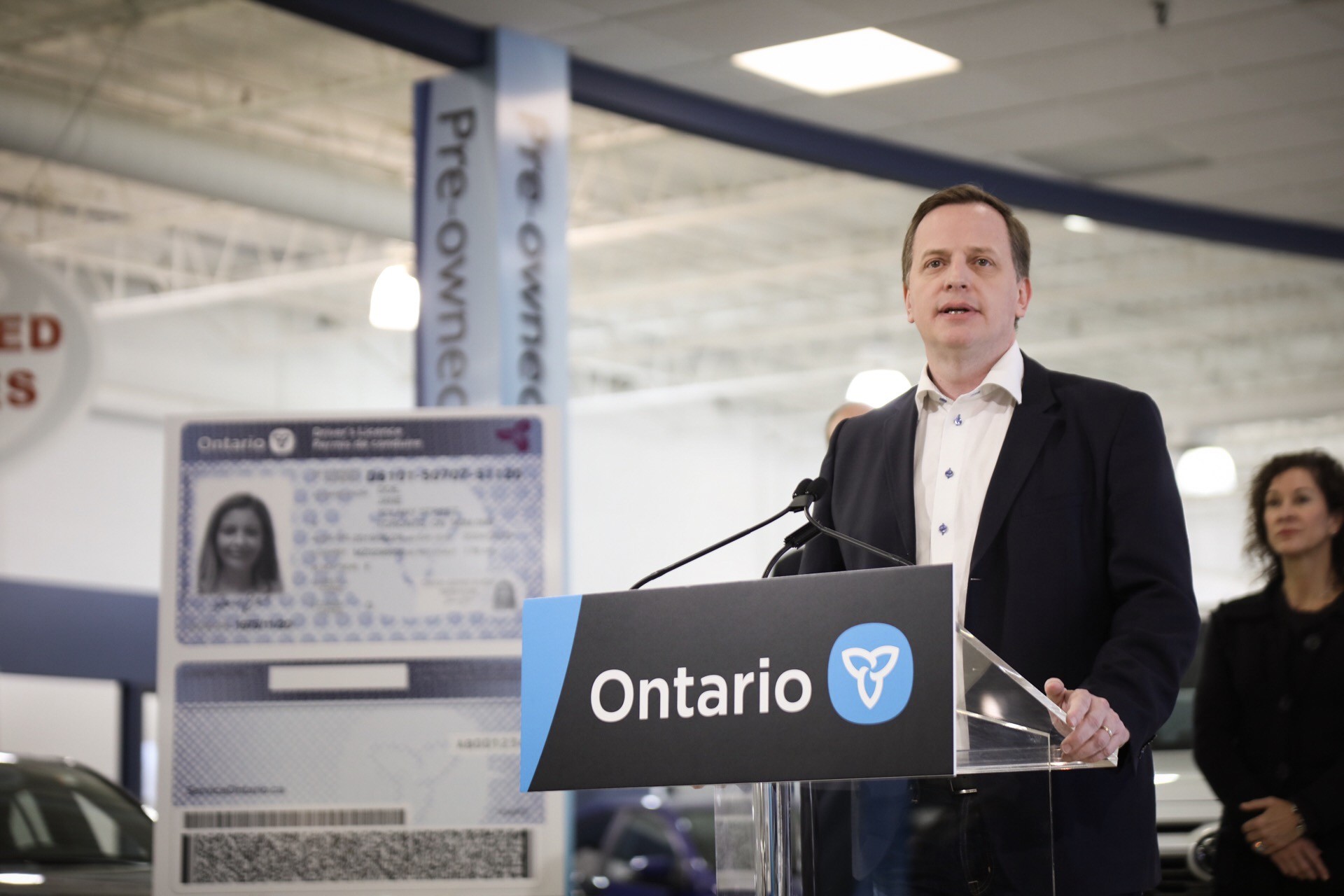
Former minister of transportation (now Environment Minister) Jeff Yurek
Gray says reopening the EA deliberately ignores those findings.
“The review panel that was established by the previous government really concluded that this highway was a bad choice in terms of solving transportation issues in the region, and it’s clearly going to advance and perpetuate sprawl, more highway gridlock, more car-dependent transportation in the region,” he adds. “ It’s a good example of this government moving forward in a direction on transportation issues that is exactly the opposite direction that experience within North America over the last 25 or 30 years would tell us we should do.”
For that reason, many suggest ulterior motives for this government to launch a highway project shown to have few benefits for solving GTA’s congestion issues.
In particular, they point to Premier Ford’s cozy relationship with the development industry — from his secretly recorded statements ahead of last year’s election promising a group of developers he would open up the Greenbelt for development — something he later back-pedalled on — to his many pieces of developer-friendly legislation, most recently Bill 108.
“This highway is sort of a new access point to all this farmland and natural heritage area, to open it up for rapid development of sprawl, and you’ve seen that in the legislative agenda of this government over the last year,” Gray says. “You can look at almost all the changes to the planning act, the gutting of the endangered species act, changes to the Growth Plan, [and now] the relaunch of the GTA West Highway.
“If you look at all of these through the lens of, ‘What would a sprawl developer want?’ you can [see] the result in the legislation. It’s very blatant, and they’re wildly celebratory of the fact that they have a government in power that essentially does their bidding and ignores any other facts, data, public interest, long-term economic viability of the region,” he adds. “It’s just a complete abdication of responsibility in terms of the broader public interest.”
The previous EA estimated it would cost between $4 billion and $6 billion to construct the highway — dollars that detractors note could be put to much better use elsewhere. For Brampton GO commuters, pouring those dollars into increased train service and the eventual all-day, two-way GO service that has long been promised might be a welcome choice.
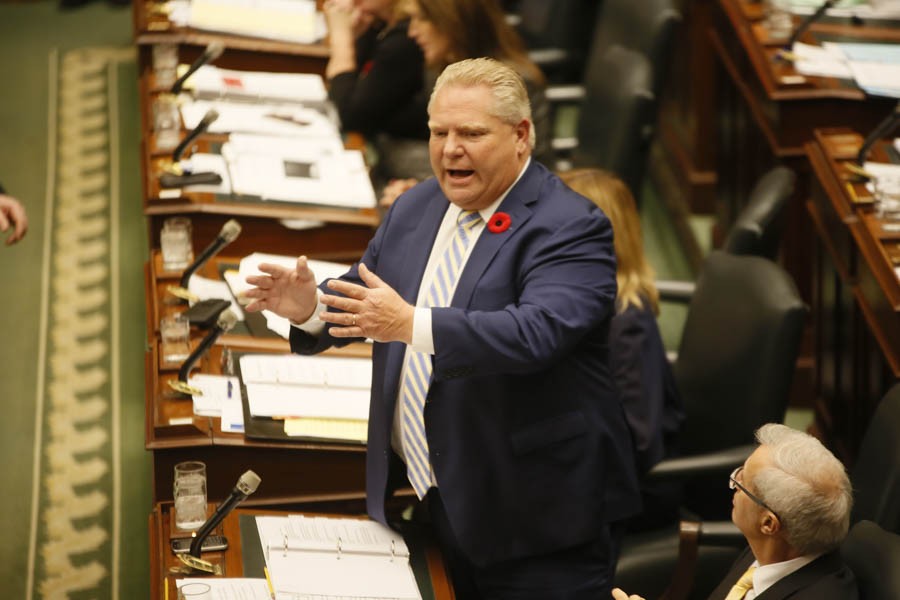
Premier Doug Ford
“It’s very ironic that we have a government that is saying we need to cut all kinds of programming because they have no money, [but] they’re tracking forward with forking out $5 billion or $6 billion for a highway that won’t improve transportation,” Gray says.
Crandall is trying to keep an open mind and waiting for the eventual terms of reference for the EA, which will determine the extent of the study and whether other options would be considered. In a perfect world, she says, the process would include a “robust” Part Two EA, which allows consideration of other options.
“The previous report from the panel indicated that you can accomplish the objectives without building a new highway,” she says.
Yet, she knows from experience that a change in direction is unlikely; the province has had a long love affair with highways and their development benefits.
“That’s the comfort zone,” she says. “Saying, let’s try something radically different — that’s the place we have to get to, and that’s really hard to get to.”
Email: [email protected]
Twitter: @JoeljWittnebel
Submit a correction about this story


